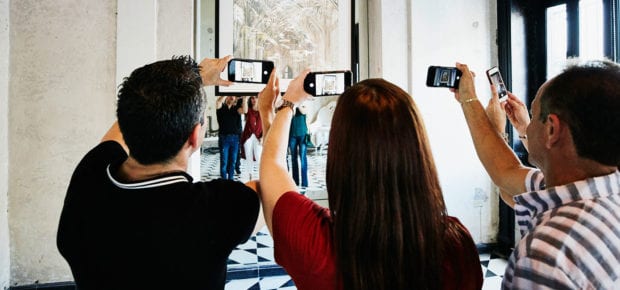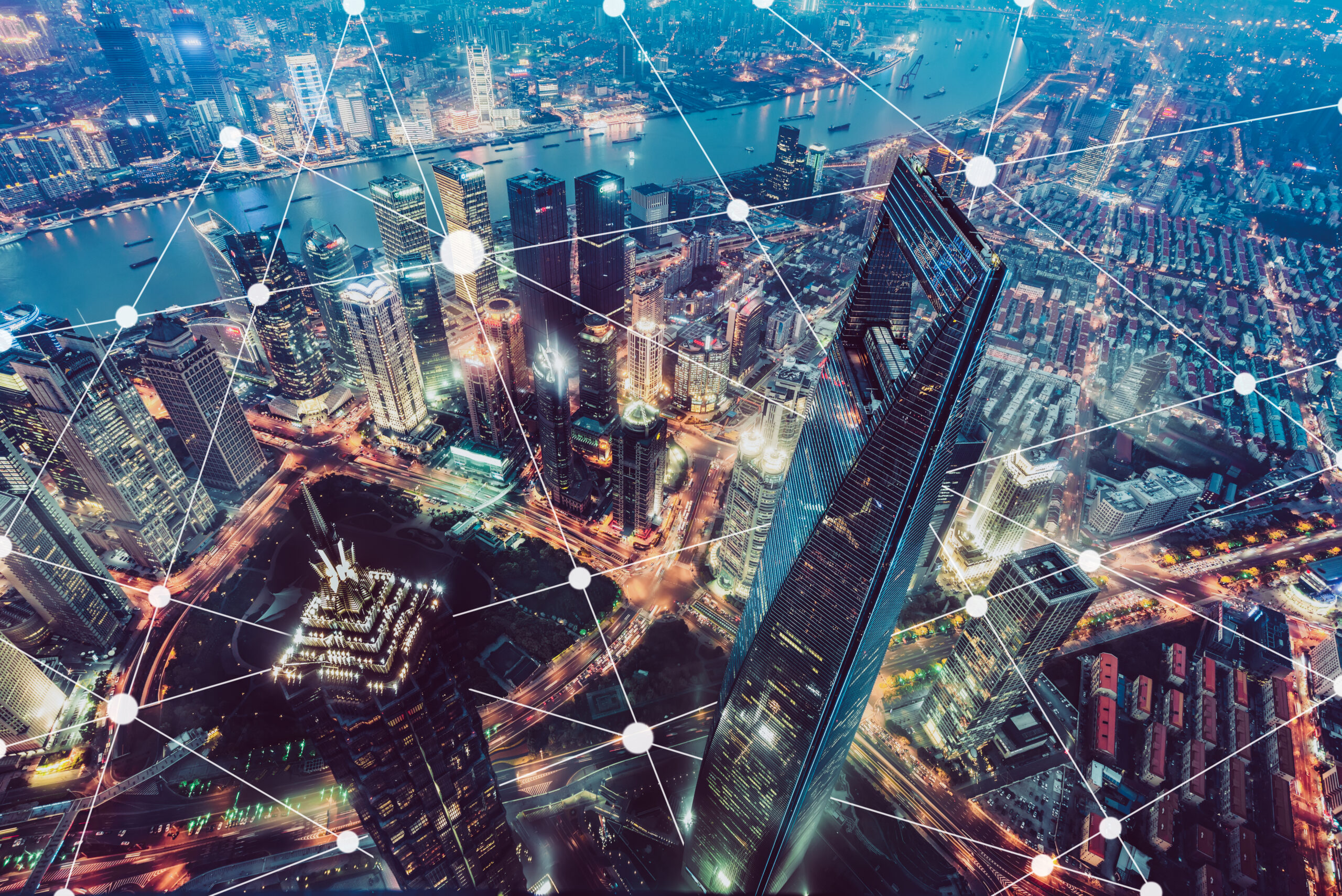October 11, 2019
Have you ever wanted to explore an ancient pyramid in Egypt, have a conversation about the theory of relativity with Albert Einstein or understand the enormity of a Tyrannosaurus Rex? As augmented reality (AR) and virtual reality (VR) become more accessible to the general population, your wish might now be possible.
AR and VR exhibits are increasingly becoming a main attraction at major museums and art galleries across the globe. But how is this type of interactive technology being used to increase a museum’s audience engagement and ultimately help children and adults retain valuable information in an educational atmosphere? Many museums are offering innovative and exciting ways for patrons to enjoy exhibits.
The use of interactive elements and new technologies in a museum environment is not a new concept. “Museums have historically been a place for physical artifacts,” explains IEEE member Todd Richmond. “Emerging technology has been used over the years – audio recordings with explanations, interactive displays, video pieces. AR/VR will continue this trend, both likely used in slightly different ways.”
What is the Difference Between AR and VR in Museums?
While both AR and VR have their benefits, the two technologies offer different types of engagement experiences. It’s important for a museum curator to understand these technologies in order for children and adults to be fully captivated or immersed in the experience.
“VR’s strength is embodiment and immersion,” explains Richmond. “So instead of looking at a physical display or video screen that recreates a time, place and/or objects, a user will be able to be inside that time/place.”
The benefit of using VR in museums means guests can feel like they’re walking in someone else’s shoes, understand their different viewpoints and engage in those interactions rather than just observe in a traditional setting.
“AR is slightly different in that it can overlay information, people and/or objects on the physical space,” says Richmond. “So museums and classrooms can be inhabited by a combination of physical spaces/objects and digital representations of information, details or people/objects.”
Utilizing AR in museums means that digital experiences can become context-aware based off the user, change for different times of the day, or even adapt to different spaces. Museums often use AR for interactive scavenger hunts that encourage exploration throughout a space.
See also AR/VR Technologies: The Future of Research, Education and Exploration
How to Keep Engagement Levels High with AR/VR Technology
Once an AR/VR technology is established in a museum, users must be able to easily interact and stay engaged with the curated story line and technology.
“Right now AR/VR is novel, so you can gain attention rather easily,” says Richmond.” That said, once you have someone’s attention, you need to keep it, and to do that the experience needs to be compelling, entertaining and useful.”
But as AR/VR becomes an increasingly popular trend in educational environments such as in museums, Richmond is hopeful the technology will improve to increase engagement and offer an interactive way to learn.
“We’re still in the early days of immersive mediums, so the types of experiences that are both engaging and have efficacy are challenging to create,” says Richmond. “But as with any medium, the more we experiment, the better we get.”
AR/VR Exhibits to Explore
Interested in testing out the newest technology for yourself? Here are some of the best exhibits around the world:
- Peterson Automotive Museum
- The National Museum of Finland
- The National Museum of Singapore
- Smithsonian National Museum of Natural History
- The Kennedy Space Center






 Meaningful Momentum or Running in Place?
Meaningful Momentum or Running in Place? AI Through Our Ages
AI Through Our Ages Liquid Infrastructure: Our Planet's Most Precious Resource
Liquid Infrastructure: Our Planet's Most Precious Resource The Impact of Technology in 2025
The Impact of Technology in 2025 Quantum and AI: Safeguards or Threats to Cybersecurity?
Quantum and AI: Safeguards or Threats to Cybersecurity? Why AI Can't Live Without Us
Why AI Can't Live Without Us Bits, Bytes, Buildings and Bridges: Digital-Driven Infrastructure
Bits, Bytes, Buildings and Bridges: Digital-Driven Infrastructure Impact of Technology in 2024
Impact of Technology in 2024 Emerging AI Cybersecurity Challenges and Solutions
Emerging AI Cybersecurity Challenges and Solutions The Skies are Unlimited
The Skies are Unlimited Smart Cities 2030: How Tech is Reshaping Urbanscapes
Smart Cities 2030: How Tech is Reshaping Urbanscapes Impact of Technology 2023
Impact of Technology 2023 Cybersecurity for Life-Changing Innovations
Cybersecurity for Life-Changing Innovations Smarter Wearables Healthier Life
Smarter Wearables Healthier Life Infrastructure In Motion
Infrastructure In Motion The Impact of Tech in 2022 and Beyond
The Impact of Tech in 2022 and Beyond Cybersecurity, Technology and Protecting Our World
Cybersecurity, Technology and Protecting Our World How Technology Helps us Understand Our Health and Wellness
How Technology Helps us Understand Our Health and Wellness The Resilience of Humanity
The Resilience of Humanity Harnessing and Sustaining our Natural Resources
Harnessing and Sustaining our Natural Resources Creating Healthy Spaces Through Technology
Creating Healthy Spaces Through Technology Exceptional Infrastructure Challenges, Technology and Humanity
Exceptional Infrastructure Challenges, Technology and Humanity The Global Impact of IEEE's 802 Standards
The Global Impact of IEEE's 802 Standards Scenes of our Cyber Lives: The Security Threats and Technology Solutions Protecting Us
Scenes of our Cyber Lives: The Security Threats and Technology Solutions Protecting Us How Millennial Parents are Embracing Health and Wellness Technologies for Their Generation Alpha Kids
How Millennial Parents are Embracing Health and Wellness Technologies for Their Generation Alpha Kids Space Exploration, Technology and Our Lives
Space Exploration, Technology and Our Lives Global Innovation and the Environment
Global Innovation and the Environment How Technology, Privacy and Security are Changing Each Other (And Us)
How Technology, Privacy and Security are Changing Each Other (And Us) Find us in booth 31506, LVCC South Hall 3 and experience the Technology Moon Walk
Find us in booth 31506, LVCC South Hall 3 and experience the Technology Moon Walk Virtual and Mixed Reality
Virtual and Mixed Reality How Robots are Improving our Health
How Robots are Improving our Health IEEE Experts and the Robots They are Teaching
IEEE Experts and the Robots They are Teaching See how millennial parents around the world see AI impacting the lives of their tech-infused offspring
See how millennial parents around the world see AI impacting the lives of their tech-infused offspring Take the journey from farm to table and learn how IoT will help us reach the rising demand for food production
Take the journey from farm to table and learn how IoT will help us reach the rising demand for food production Watch technical experts discuss the latest cyber threats
Watch technical experts discuss the latest cyber threats Explore how researchers, teachers, explorers, healthcare and medical professionals use immersive technologies
Explore how researchers, teachers, explorers, healthcare and medical professionals use immersive technologies Follow the timeline to see how Generation AI will be impacted by technology
Follow the timeline to see how Generation AI will be impacted by technology Learn how your IoT data can be used by experiencing a day in a connected life
Learn how your IoT data can be used by experiencing a day in a connected life Listen to technical experts discuss the biggest security threats today
Listen to technical experts discuss the biggest security threats today See how tech has influenced and evolved with the Games
See how tech has influenced and evolved with the Games Enter our virtual home to explore the IoT (Internet of Things) technologies
Enter our virtual home to explore the IoT (Internet of Things) technologies Explore an interactive map showcasing exciting innovations in robotics
Explore an interactive map showcasing exciting innovations in robotics Interactively explore A.I. in recent Hollywood movies
Interactively explore A.I. in recent Hollywood movies Get immersed in technologies that will improve patients' lives
Get immersed in technologies that will improve patients' lives